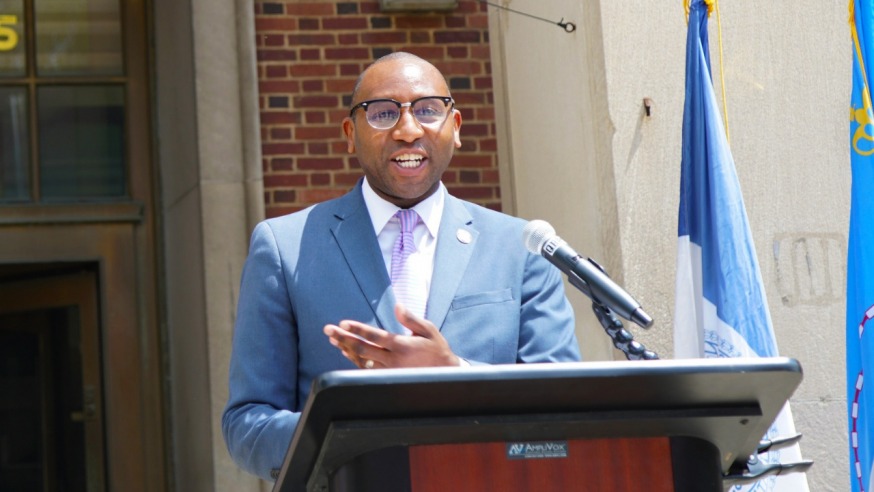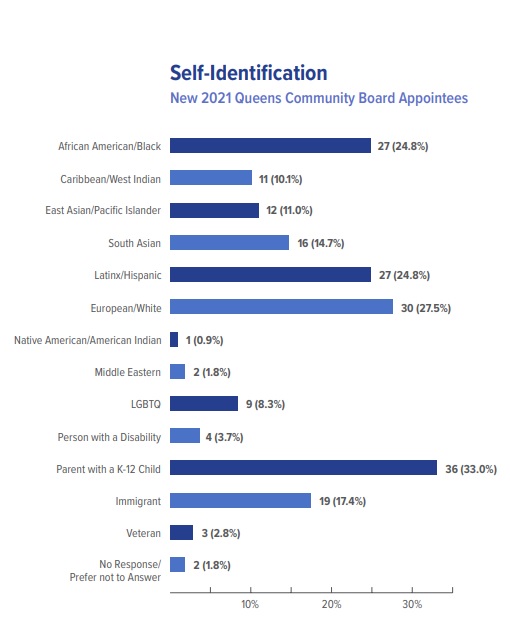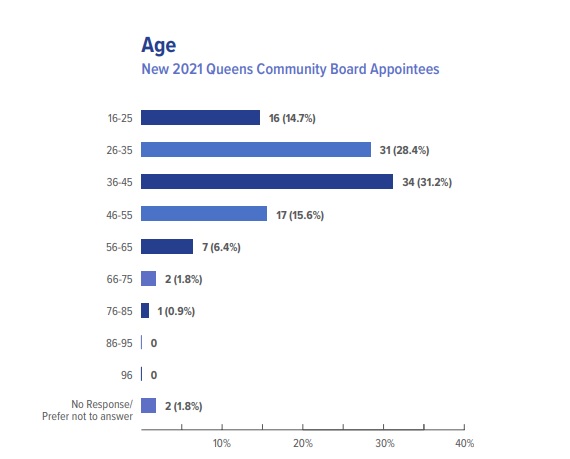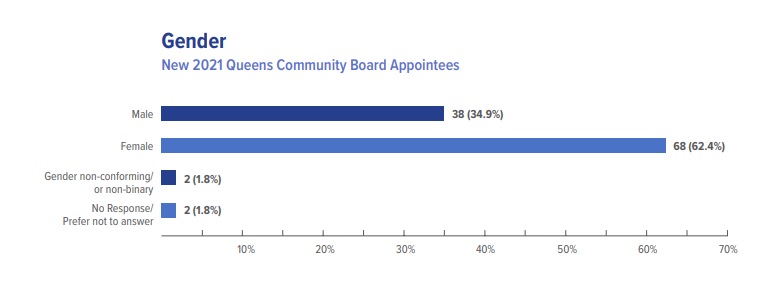
Queens Borough President Donovan Richards (Photo: Queens Borough President’s Office)
July 5, 2021 By Michael Dorgan
A new report has revealed that Queens community boards are becoming more diverse.
The report, released by the Queens Borough President’s office Thursday, shows an increase in the percentage of board members who identify as minorities, immigrants and LGBTQIA+.
Queens Borough President Donovan Richards appointed 373 members across Queens’ 14 community boards earlier this year that produced a “historically diverse” group of representatives, according to the report.
The majority of the 373 members appointed by Richards this year were existing board members, although 110 members were selected to a board for the first time (new appointees).

Queens Community Board Demographic Report
The new appointees covered a number of demographic groups—with 24.8 percent being Latinx/Hispanics, 24.8 percent African American, 11 percent East Asian/Pacific Islanders and 14.7 percent South Asian. The percentage of immigrants was 17.4 percent, while 8.3 percent were part of the LGBTQIA+ community — all increases from previous years.
In total, 72.5 percent of the new appointees were people of color.
More women and young people were appointed to boards for the first time also.
Of the first-time members, 62 percent were female and 74 percent were 45 years or younger, according to the report.
Parents of school-aged children were better represented with this year’s new appointees too—with about a third of new members having children in grades K to 12.
All 14 boards have about 50 members, with half the members appointed each year. Traditionally existing board members have been automatically reappointed, except in rare situations when their attendance records have been poor.
Richards hailed the results of the report as a sign of progress.
“This year’s new community board appointment class is unprecedentedly diverse and represents an important first step in ameliorating the demographic disparities that exist on community boards across Queens,” Richards said in a statement.

Queens Community Board Demographic Report
Richards said the change can be attributed, in part, to his initiative making it easier for the public to apply to become board members.
For example, the public can now apply online and the applications are offered in different languages. Richards said he also bolstered outreach to local colleges and ethnic media.
The borough president received nearly 950 applications this year, including more than 700 from people who were not existing members of a community board.
The number of applications was a record—and a 58 percent increase from 2020.
Richards, according to the report, was therefore able to select new members from a greater pool of applicants and make appointments in line with the demographics of various board districts.
However, Richards said that there was still more work to be done.
“The unfortunate fact is that many of those disparities, although lessened this year, continue to exist,” he said.

Queens Community Board Demographic Report
One Comment

Also mote Socialist/ Communist.